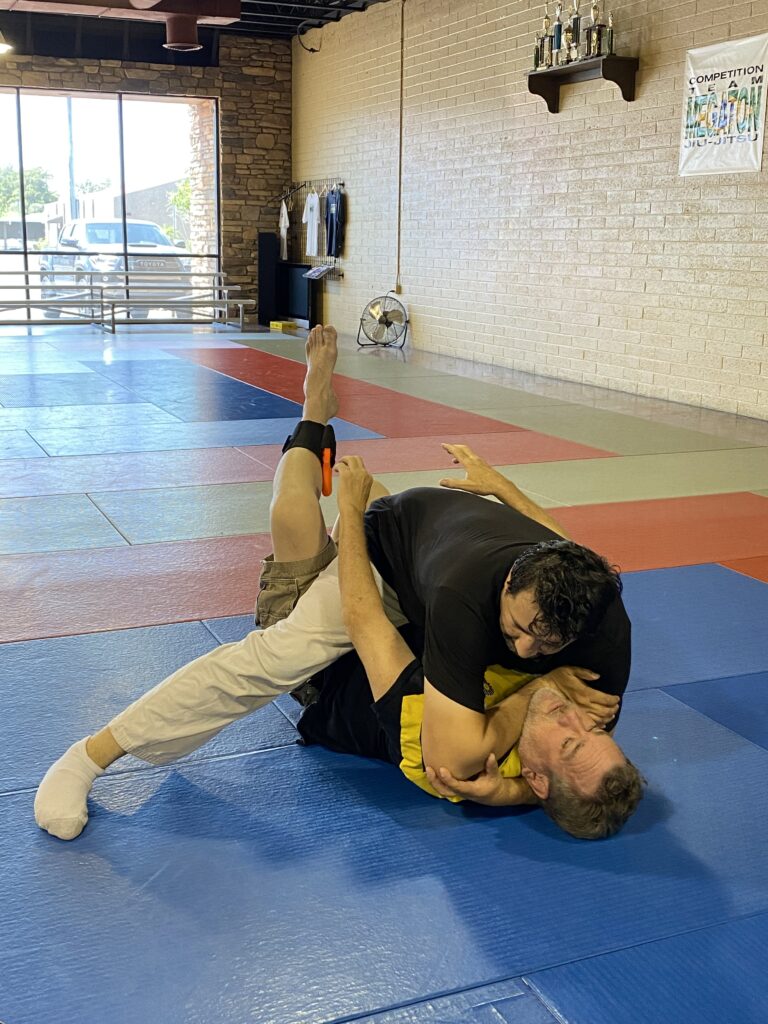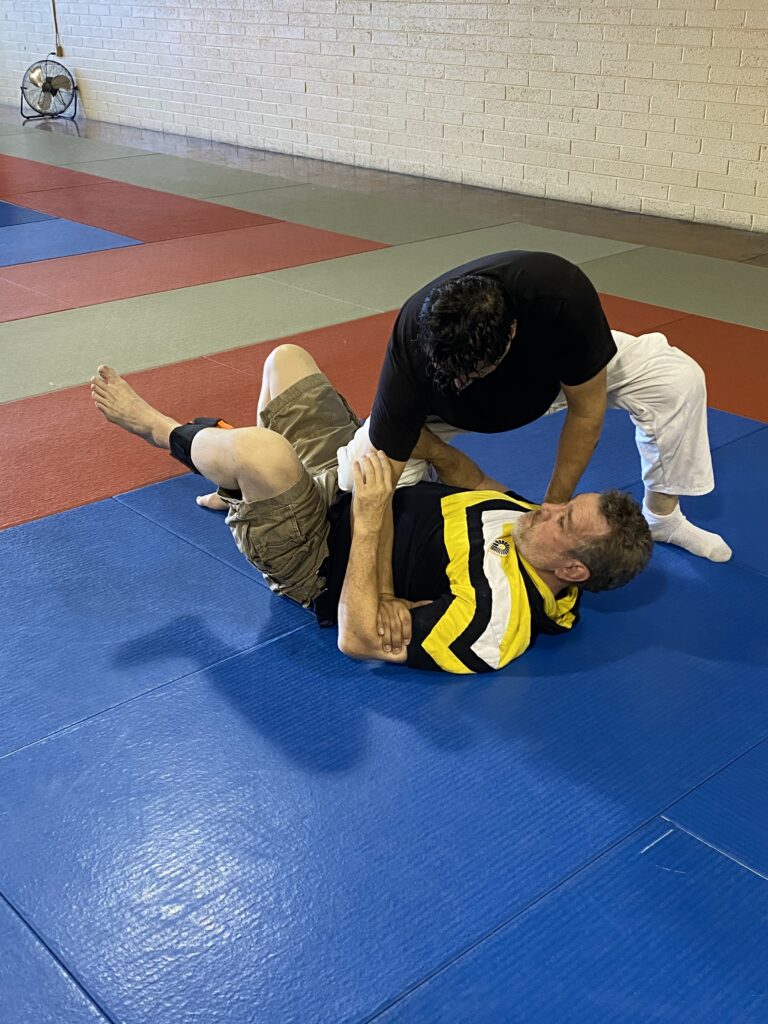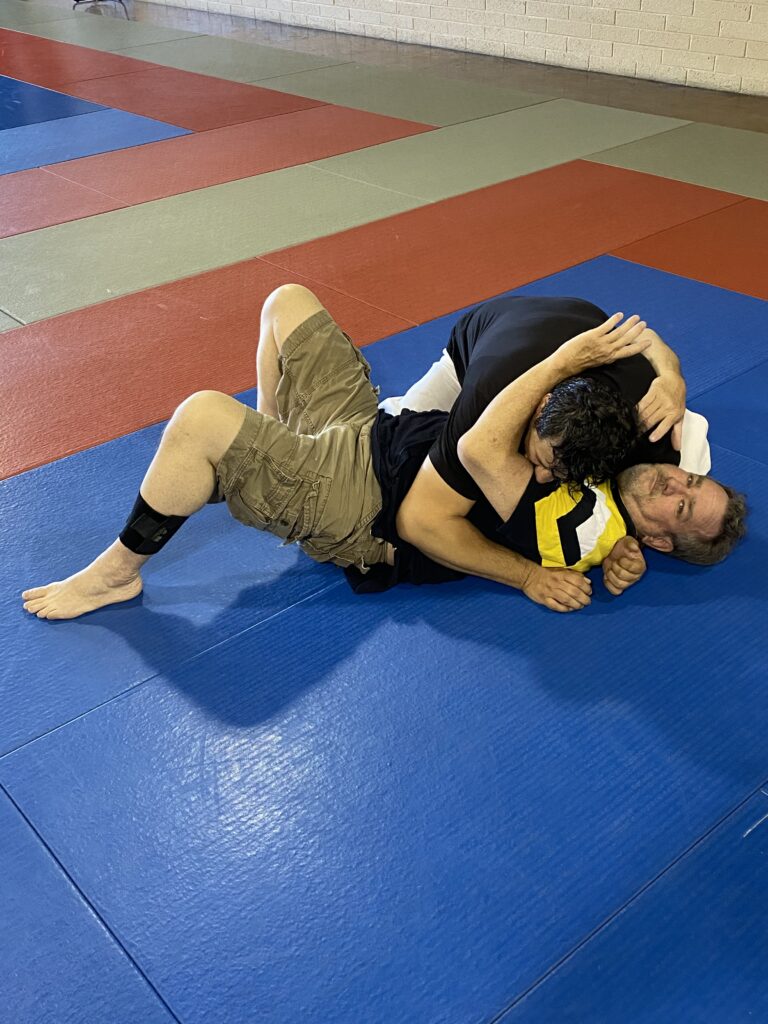I was on the most recent Primary & Secondary podcast with Chuck Haggard and Cody from Taurus and we talked revolvers. We still have aspects of the subject to cover so there will likely be a part 2 (hopefully with DB), but there was some good stuff here as well.
Monthly Archives: June 2022
Ankle Carry While Grappling
I have touched on this before, but the message is still getting lost. In the last few weeks I have seen two different articles in the gun blogosphere covering ankle carry and both amde the point this method is great if you find yourself on the ground. NO IT IS NOT. Full stop, no maybes. This is not where ankle carry shines, and in fact is the worst reason to use it.
I am pretty agnostic on how someone carries the tools that they rely on for self-defense. Mostly that stems from the fact that I’m not a narcissist, nor am I a child that thinks that my personal context and situation are the only ones that matter and that everyone’s lives are exactly like mine. I also have no need to have my own personal decisions validated by anyone else’ choices.
I may find a particular handgun carry method to not fit into my life at all but that does not mean that it is a poor method in and of itself. Someone else might find it to be the best fit for their lives. I try to ignore those kind of discussions on the internet where people are told in a very black and white manner on how they should conduct their personal matters and if they don’t walk in lockstep with the original commentator then they are stupid. Or poor. Or lazy et al.Who am I to assume that while I have little use for something like a shoulder holster that someone else may find great use for it and can put it to great effect. And most importantly in the great scheme of things, what they do or do not do in no way affect my life so I don’t need to put any time or effort into thinking about it.
The only issue I have in these discussions is when someone does not think through everything and has left either a positive or negative uncovered. The most glaring example for me that comes quickly to mind is the use of ankle carry for small handguns.
Now before we go much further I would like to make it clear that I myself have a definite use for ankle carry. There are times when my own personal environment and context dictate that the most functional means to carry the handgun is on my ankle. What I’m about to discuss in no way diminishes ankle carry as a potentially beneficial tactic.
What I’m going to talk about is a very specific part of ankle carry that many people in the Firearms self-defense community will cite as a strong reason for ankle care, when in fact it is the exact opposite.
There are many times when you will hear someone give one of the justifications to carry on the ankle is that should they find themselves on the ground and in a grappling situation, they can easily reach the gun on their ankle and use that to fix the problem. From the comfort of a keyboard and with no understanding of what grappling actually entails, this sounds like a really good tactic. And even better (and possibly more importantly for some folks), it is a way to compensate for a lack of grappling skill which means that we don’t have to spend any time rolling around on the ground with other sweaty people and potentially looking less than John Wick-like.
I know this may be very appealing, however it is completely lacking any foundation in reality whatsoever. All it takes is a month or two of training Brazilian Jiu-Jitsu against a variety of training partners and you will quickly see for yourself. Any of the positions you will find yourself in whenever you don’t know anything about grappling and you were up against either someone with grappling skill or superior physical attributes ( or even worse a horrific combination of both) will graphically demonstrate this fallacy. If you’ve never put yourself in this kind of situation against someone legitimately trying to control you it is very easy to drift into Fantasyland. When you don’t know how someone is going to control you from the top you can visualize all sorts of ways to deploy firearm and have no basis in reality to support your construct.
Please take a look at the accompanying pictures. What I would especially like to point out is that every position shown is straight out of BJJ 101. The top guy is doing nothing different or special for these pictures that he would not be doing normally at any time in any BJJ academy anywhere in the world. When I asked my demo partner to participate, I did not give him any specifics. I just told him to control me that same way he would in order to set up a finishing move such as a choke, an arm break, a shoulder dislocation, or any other kind of end state where I am either unconscious or suffering from catastrophic injury and incapacitating pain . I take the time to explain this because a ton of people will look at these illustrations and they will immediately try to rationalize them away.

One of the ways non-grapplers attempt to minimize the usefulness of grappling in a weapons based environment is that they will say something along the lines of “BJJ guys don’t train against weapons so they will not see it coming and be totally unaware of the gun”. First of all, that is a mighty big assumption that all BJJ players do everything the same and that none of them will ever think about applying this while carrying a gun. Second of all, as you can easily see from the photos, it is irrelevant. Look at how the top guy is controlling the bottom person. In the mount depiction for instance, the top guy has the bottom guy’s back pinned solidly to the mat, and is stretching forward. Both of those prevent the bottom guy from being able to stretch his arms far enough to reach far, and with the top guy posting on his leg to strengthen the pin and choke, he blocks the bottom guy’s legs from being able to come close to the hands. Without the bottom guy having extraordinary flexibility, he is stopped from accessing the ankle gun. And, to add to the problem, desperately reaching for said gun, he does nothing to prevent the entire weight and strength of the top guy being applied against his neck. The choke will happen in 2-5 seconds at the maximum. For those who have never experienced that particular move – called an Eziquiel choke – it is excruciatingly painful in the couple of seconds of consciousness you have. I guarantee you that your ability to withstand the pain and the choke is close to non-existent.

For the knee on belly shot, it is similar in pressure and control to the mount. In order to direct the bottom guy and to keep him in place, the top guy has to manage the arms while putting massive pressure into the bottom guy’s diaphragm. Top guy also has an easy view at everything that is going on and the freedom to move and react in any way. Even if the bottom guy can somehow manage to reach for the weapon, the top guy will see it and realize, even if he is not thinking about the gun or pays attention to that possibility, what is happening and can deal with it. And I leave it to you to decide that if the gun does come out, which of these two people is in a better place to use it?

Finally, for the side control illustration, again take note of the top guy’s control. Bottom guy’s right arm is completely out of the game and is killed. His left arm is being underhooked which means he has little freedom to move or reach, and even if he does, the top guy is looking right towards where that gun will appear and is in a much superior place to dictate the end result. And again, the top guy even in a straight BJJ situation will look in that direction because he has to determine if he can go to a better position (i.e. mount or knee on belly) as well as seeing where he can adjust if he decides to attack the arm or neck. All standard stuff that puts him in the perfect place to deal with a weapon being deployed. None of this is being done because he knows a weapon is in play, but rather because this is how you deal with someone in BJJ.
One possible scenario I did not illustrate but it is easy to imagine is the idea of you being on the ground and you attacker standing above you. Someone may say “there Cecil! That is where I will be able to access my ankle gun and go to work!” No, it isn’t. Take the example of the pictures and note how easy it is for the top guy to interfere or block the in-fight weapons accesss. Now extrapolate that to where he is standing above you with compelte freedom of movement plus he can see everything you are trying to do. How are possibly going to bring that gun into action without the attacker being able to stop you, or even take the gun away and use it on you?
So let’s dispense with the demonstrably incorrect argument that the grappler will be easy prey for a trained person carrying on the ankle. It won’t happen, and only serves to delude someone and leaves them defenseless should they find themselves in that situation. Gear will not fix the problem. Software (skill set) will.
And as I said, this is not a categorical indictment of ankle carry. I have already stated I use it for myself at times. It has a definite place of purpose for many people. It has a definite place of purpose for many people. In that niche, there are not a lot of other carry options that are better. However, that does not mean it solves all problems. It may make some things worse. But there is nothing wrong with that as long as we understand the pros and cons of a particular method or concept and can plan accordingly. Fantasy does not help any of us in the world of self-defense.
Peer Measurement
This comes up again and again, especially with people who are relatively new to jiujitsu. It is extremely prevalent with those who come from another field of study where they have achieved some semblance of success such as the firearms community. They are used to seeing a very quick demonstration that they have either improved or not, simply by shooting a drill that takes all of a few seconds.
It does not work that way where there is physical opposition from another person.
Any time we are training in a physical activity where there is oppositional force such as in any of the combat sports, we run into the problem of measurement, specifically in a regular measuring of our performance and whether we are getting better or not.
If we are lifting weights, doing cardio or yoga, or shooting on a range, performance tracking is easy. With strength training, all we have to determine is are we lifting more weight, or more often? With cardio, are we going longer and/or faster? With yoga, are we stretching more, or hitting poses more solidly for longer periods of time. Shooting may be the easiest to track. Are we more accurate/faster than we were the last time we shot? All easily measured and even more easily understood.
But when working against the variable and almost endless possibilities that occur going against someone else, all that measurement becomes more like guesswork and a lot of “well, maybe”. Nothing is more frustrating that working really hard at getting better at a particular move, being able to do it perfectly well in isolation, but never pulling it off when there is resistance. We wonder if it is the move, or us. Actually, there is something more frustrating – when sometimes a move works, but other times, against the same opponent, it does not, and we can’t figure out why! That can border on heartbreaking.
The solution? I don’t know that there is one! Comforting, right? What we can do though is re-orient how we view progress, especially in the macro sense.
One of the things that it is easy to forget is that the person we are training against is working too, and may very well be working as hard and as much as you. We have to remember that while we are getting better, so are they and that can skew our relative view of our performance. Take my personal case as an example. I have 4 regular black belt training partners that are truly my peers. We are all within 10 years of each other in age, close in weight, and have been doing BJJ for close to the same amount of time, and we all train around the same number of hours in a week. When any of us roll against each other, the chance that one of us is going to dominate the other is remote. Occasionally, one of us might pull off someone cool, and be able to fully control the round, or even get the other person to tap. More often, like 98% of the time, the rolls are pretty even. If we were scoring them like a tournament, the typically result is either a close victory 3-2, 5-3, or pretty much a tie 0-0 where one or the other may have gotten an advantage (i.e. “almost a point”). If I focus on how I do with them, I could easily get discouraged. No matter how much I train, unless they stop training totally, I am not going to leap past them.
Instead, the person to focus our measurement against is the newer person, the less experienced guy. Can we get a move on him that we have not gotten before at all? If the answer is yes, more often than not, it means you are getting better. Especially if we are focused on self-defense, then the more accurate gauge anyway is against a person how knows little if any about BJJ, so the newer trainee is more precise in letting us know whether we are better or not.
Another way to look is against someone much superior to us. If that guy for example typically taps us five times in a six minute round, but then we consistently only get tapped two times, then we are better. Is that as much of an ego boost as being able to do something offensive back to them? Well, no, but it is realistic.
To sum up, don’t view your performance on a day to day measure, but rather over a longer period of time, say a month, and focus on what you did against people who you can do stuff against
Entangled WBE Encounter – video
So we have another installment of the visual proof that not only does entangled fighting happen with weapons involved, ground grappling also happens. Much to the chagrin of those who prefer to be lazy or scared of doing any such training.
This video is of a very recent (4-25-22 to be precise) robbery in NYC.
I won’t go into extreme detail because I have made the overarching point over and over again, so I will focus on a few specific details for this incident.
- Entanglement happens, even when it does not have to. Note that it looks like the victims were cooperating (or at least not resisting) but still two robbers initiated the attachment. In both instances, the robber in the black jacket knocks one victim to the ground, and then takes back control of the other victim, after the weapons have already come out. Both victims ended up on the ground when they obviously did not want to, but that was irrelevant. They did not have the skill set to prevent it, and the bad guys were willing to do it. Those two points get lost when the anti-grappling in the street people start pontificating on something that they have no experience in or understanding of.
- Note that even on the ground and not resisting, there was physical attachment between victim and robber, even with a weapon in play. The bad guys did not stand off at a distance but rather made contact with both victims to take what they wanted.
- Look at how close the handgun in the hands of black hoodie robber is to the victim on the ground on the left of the video at about the :12 second mark. This is a classic starting point in an ECQC evolution that every student goes through. What was that about this stuff never happening????
- My favorite part of this video is the environment. Where does robbery occur? In a closed space? Nope. An open and fairly broad sidewalk. Plenty of room to move, and yet it still becomes an entangled fight. Again, this is overlooked by those who try desperately to argue against these scenarios as anything plausible.
